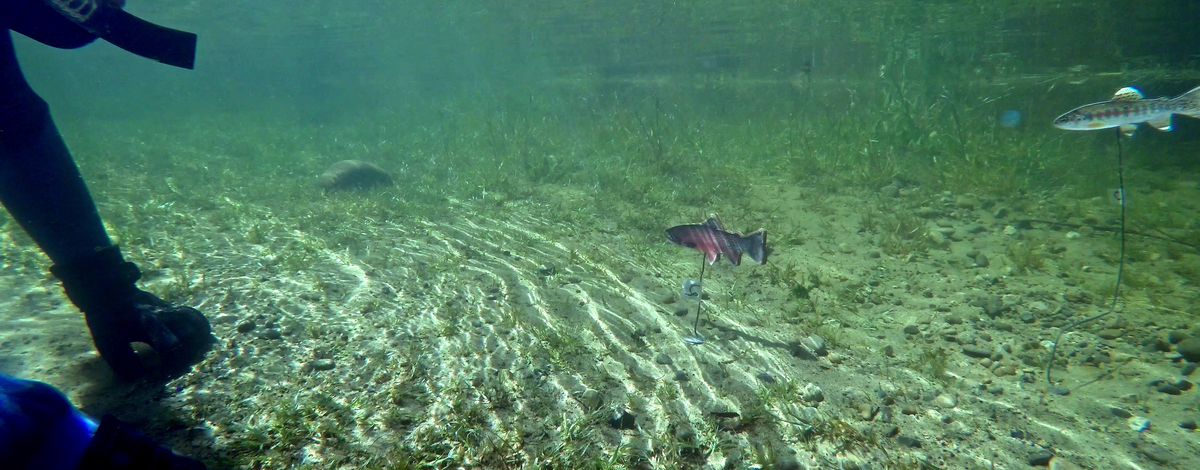Because wild Chinook salmon and steelhead trout spawn and are reared in natural environments, their status is not easily monitored. One method to monitor natural-reared Chinook salmon and steelhead trout is to use standardized snorkel survey protocols to collect juvenile salmonid data in their home streams. The data gathered each year is used to track long-term trends in wild fish abundance. These trends help fisheries managers detect increases or declines in fish populations. This information can then be used to prioritize management efforts, such as initiating habitat-improvement projects. Besides Idaho Department of Fish and Game, the Nez Perce Tribe, U.S. Forest Service and others use this data for their projects.
Four regionally based Fish and Game crews conduct wild salmonid surveys each year during June, July and August. Crews must learn how to identify salmon, steelhead trout and other fishes, collect and record data, conform to standardized snorkel survey protocols and perform all of their duties safely. This is accomplished during an eight-day training session near Lewiston each spring.
The primary objective of this training is to achieve accuracy within and consistency across the four crews. Snorkelers learn to correctly identify the different species and estimate their length underwater by using laminated fish images attached to weighted rods. These are known as ‘“fish sticks.”
Accuracy comes with time and practice. Complete and accurate data are necessary to make informed management decisions. Lessons are taught by experienced crew leaders. Because crews regularly work in rugged backcountry locations, they receive first aid and CPR training. They also learn how to contend with challenges they may experience in swiftwater environments. The crews practice hard moves, such as river crossings, in easy water.
With the knowledge gained during this training session about fish identification, data collection, standardized snorkel survey protocols, and safety, crews are prepared to snorkel survey streams throughout central Idaho. Ultimately, they will provide supporting data so fisheries managers can make informed decisions to benefit wild Chinook salmon and steelhead trout.

